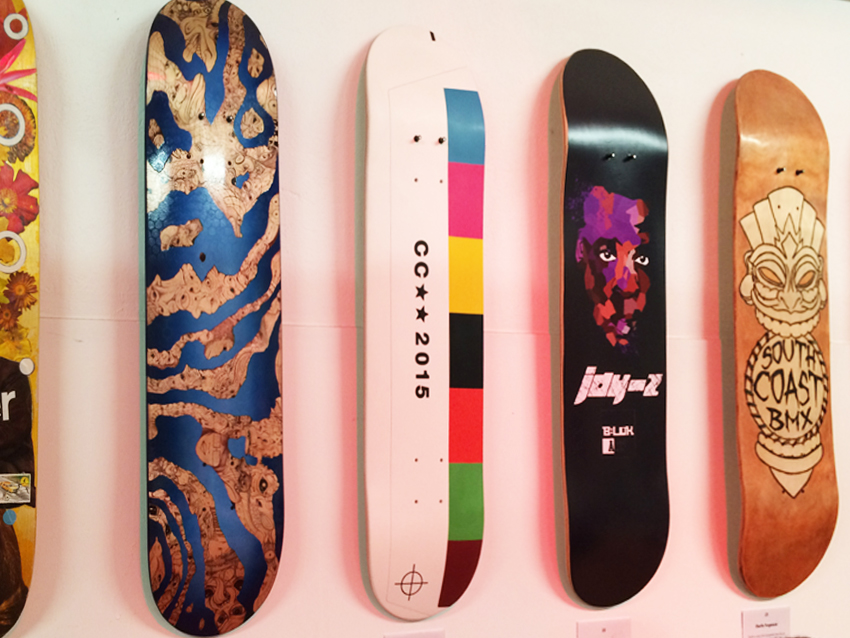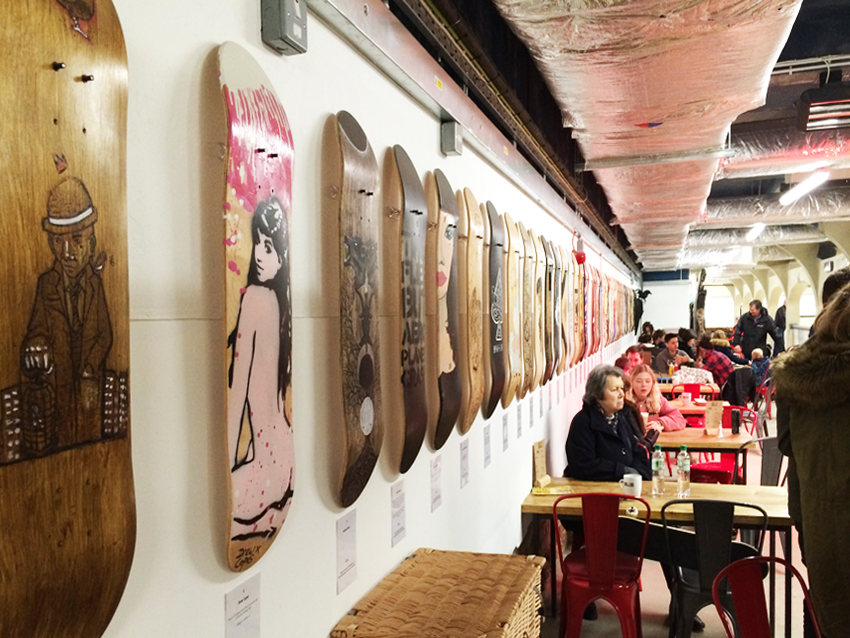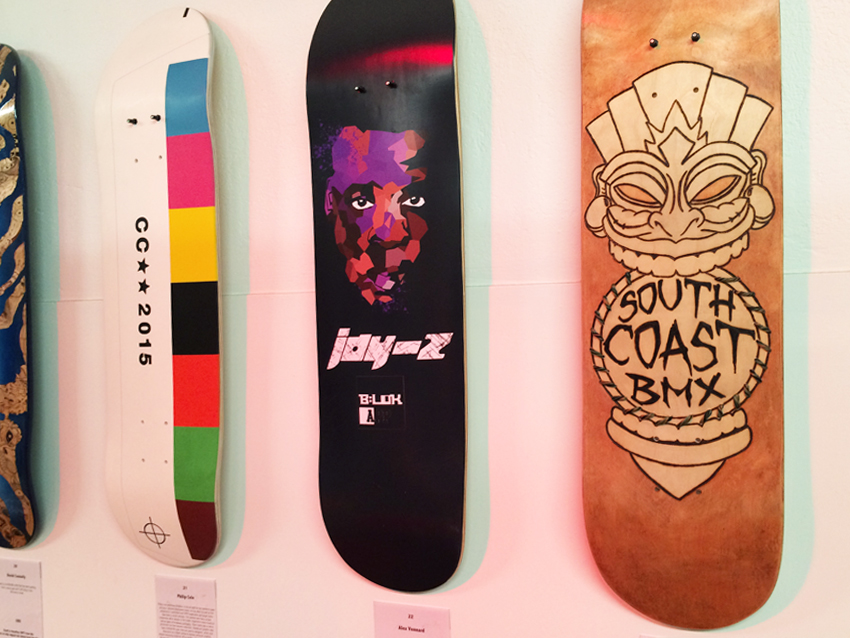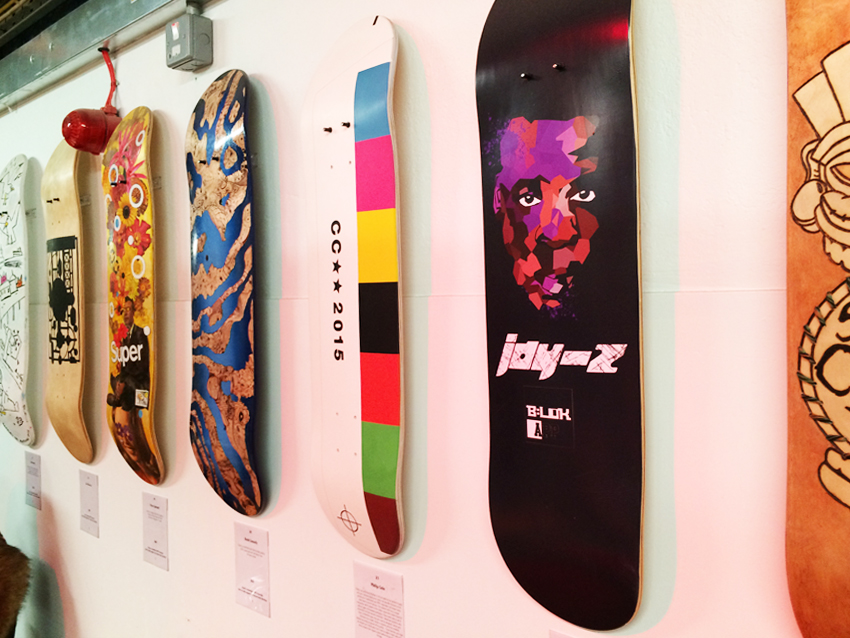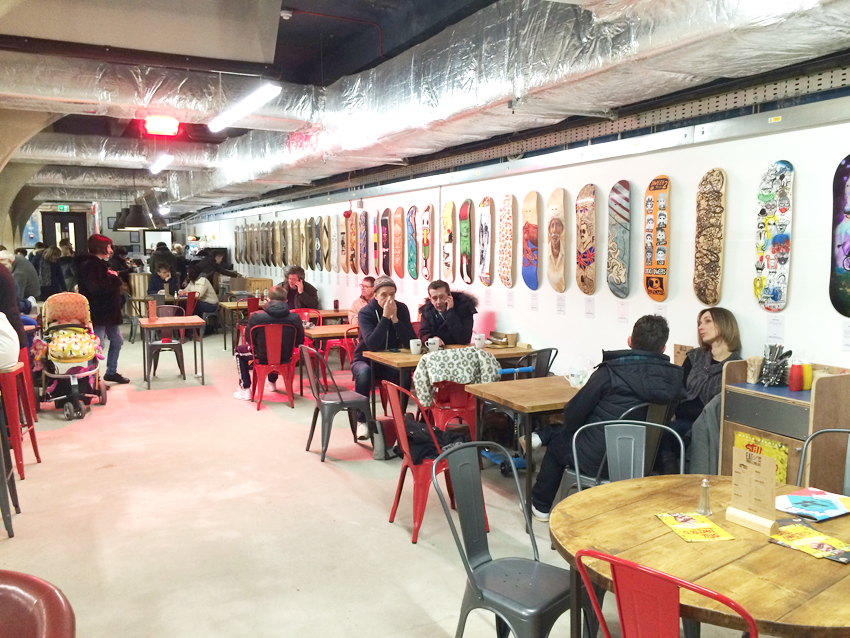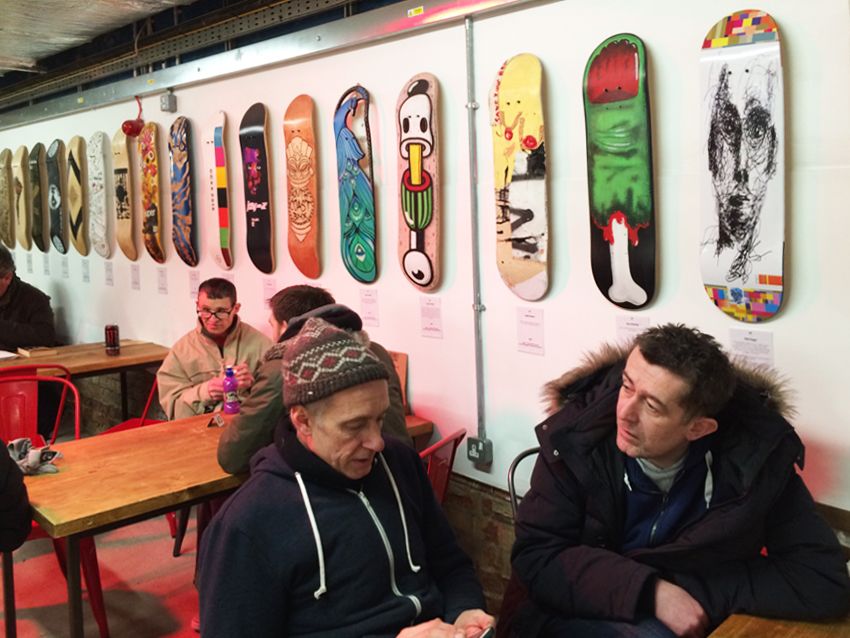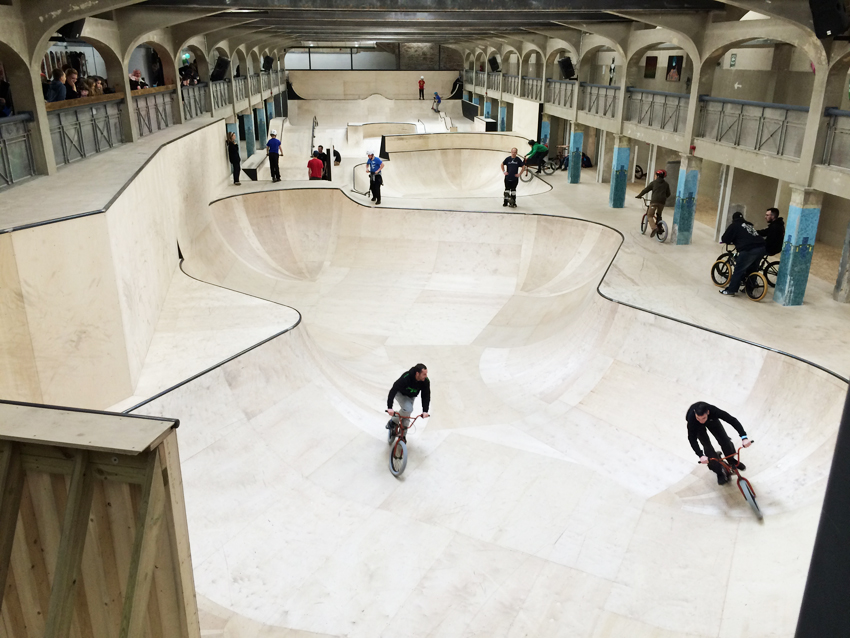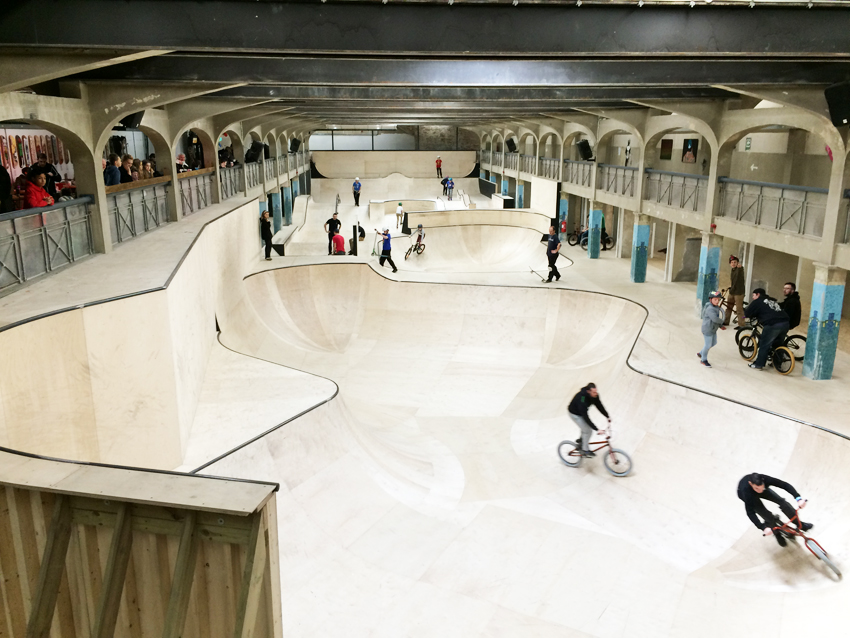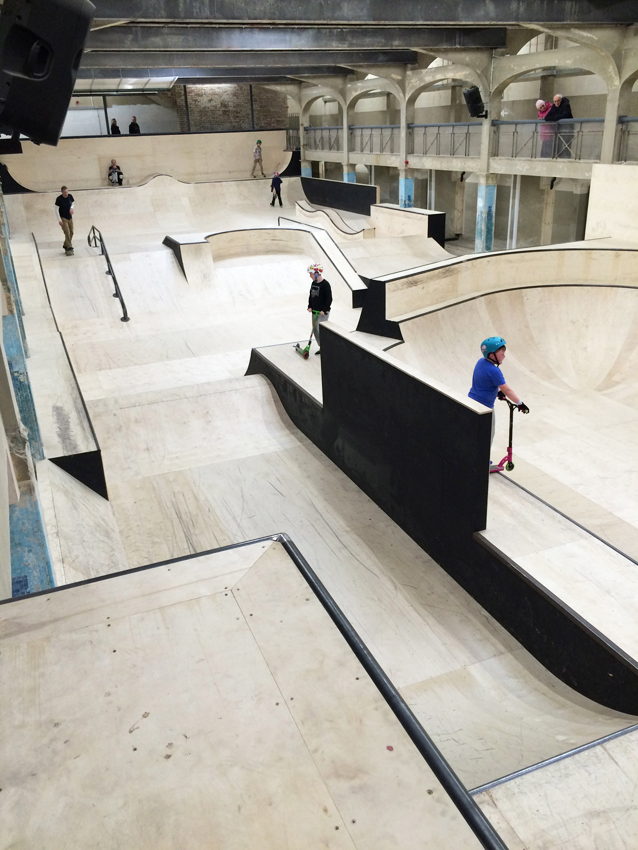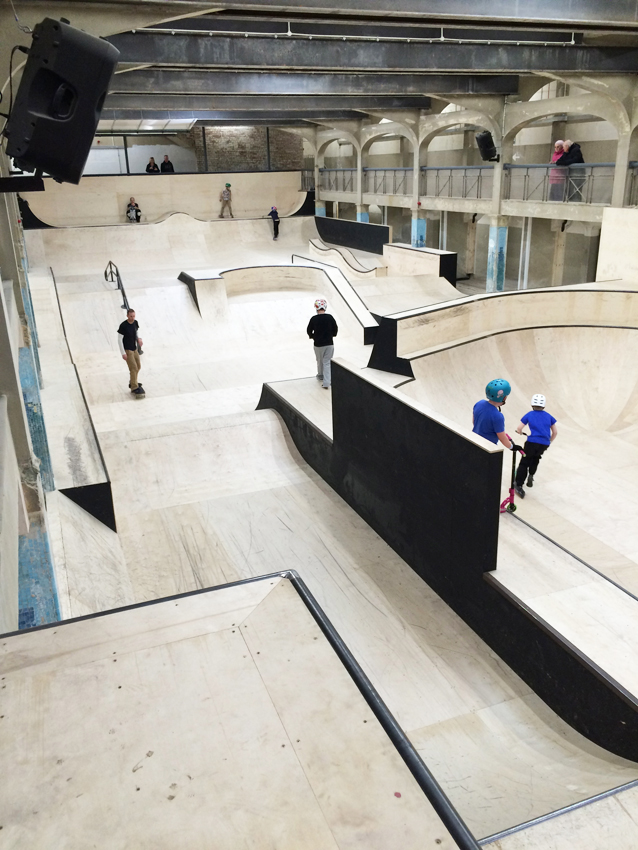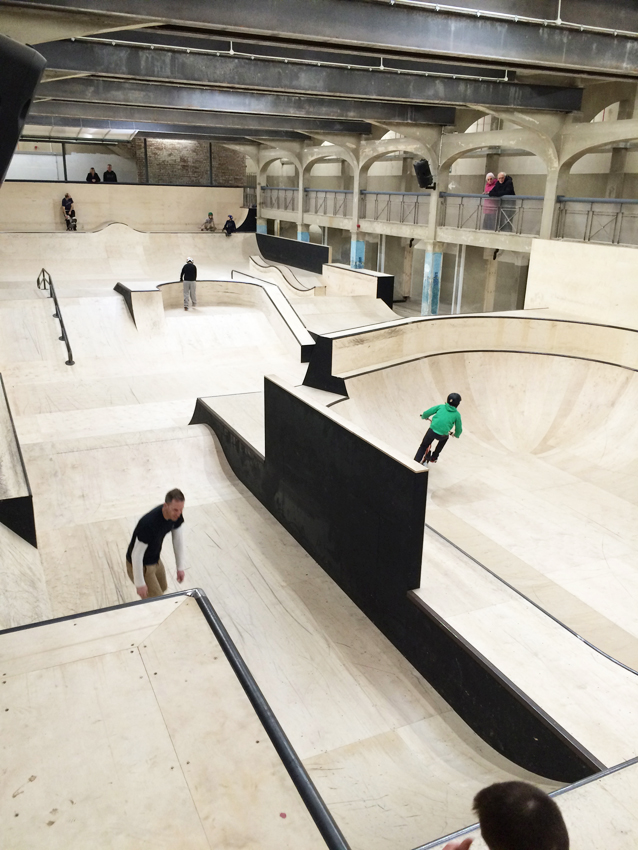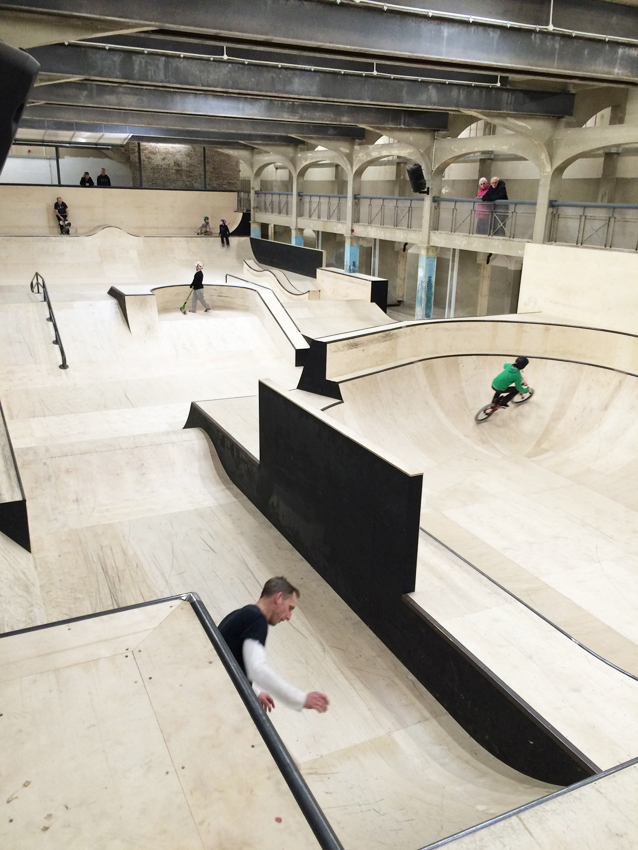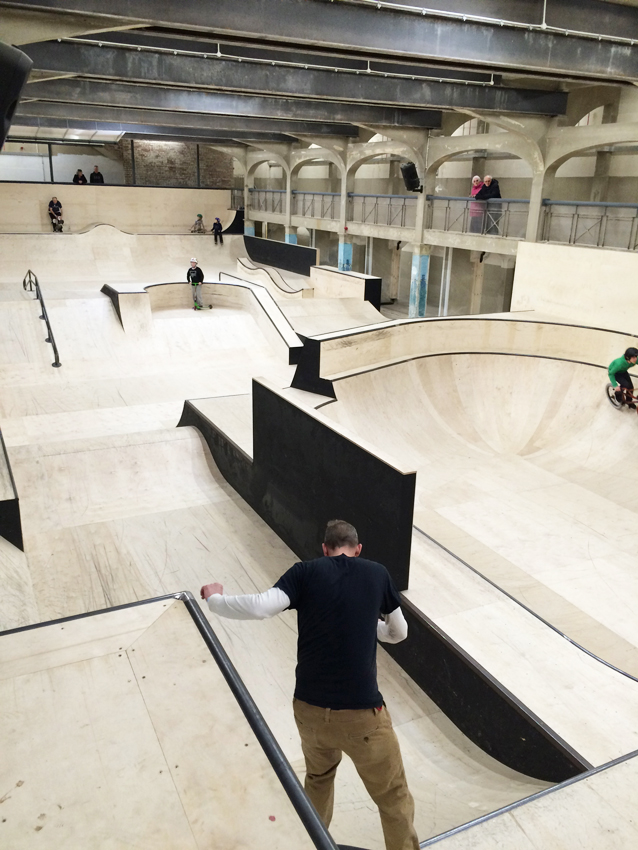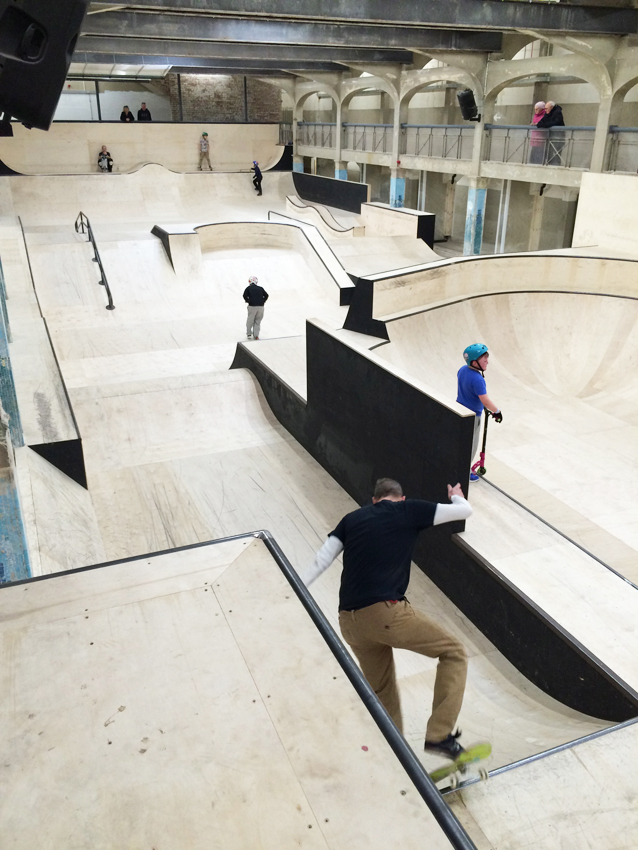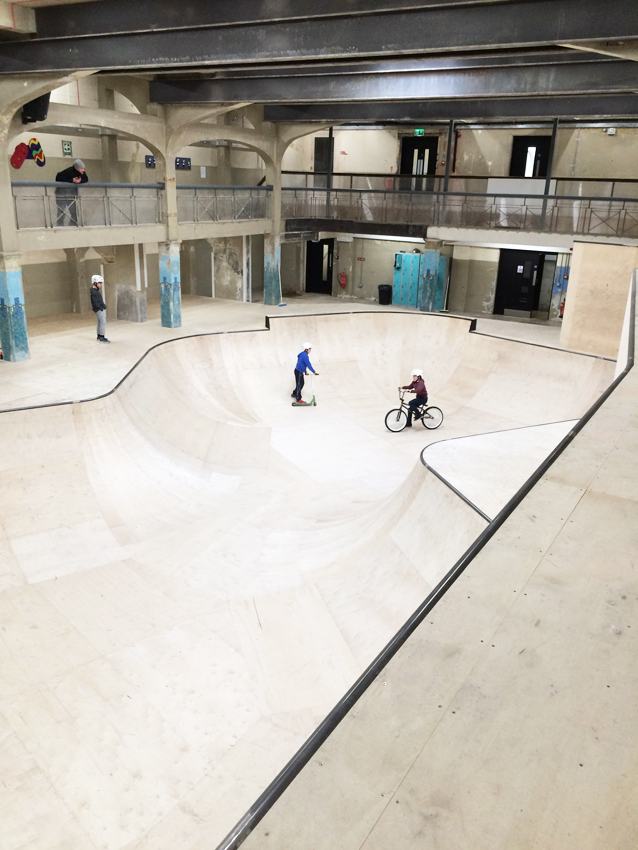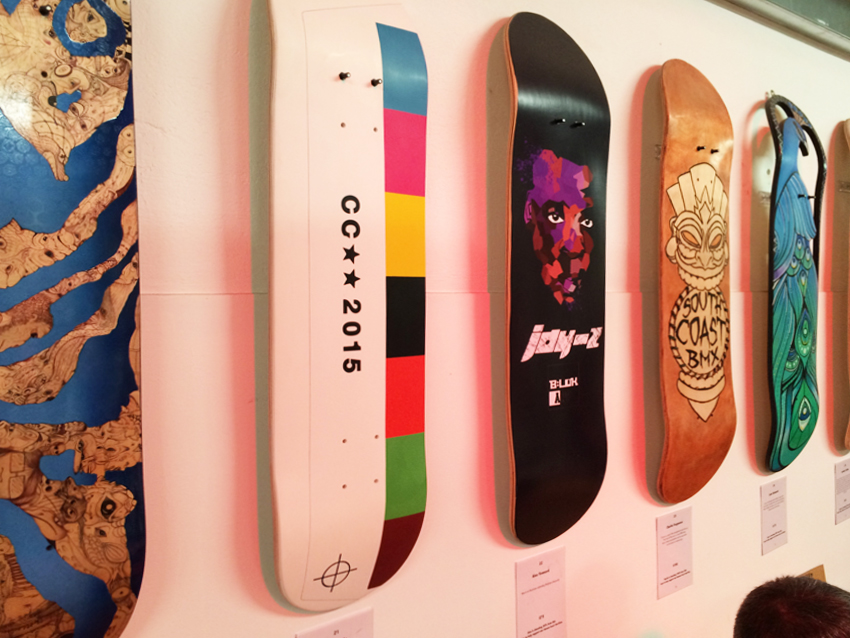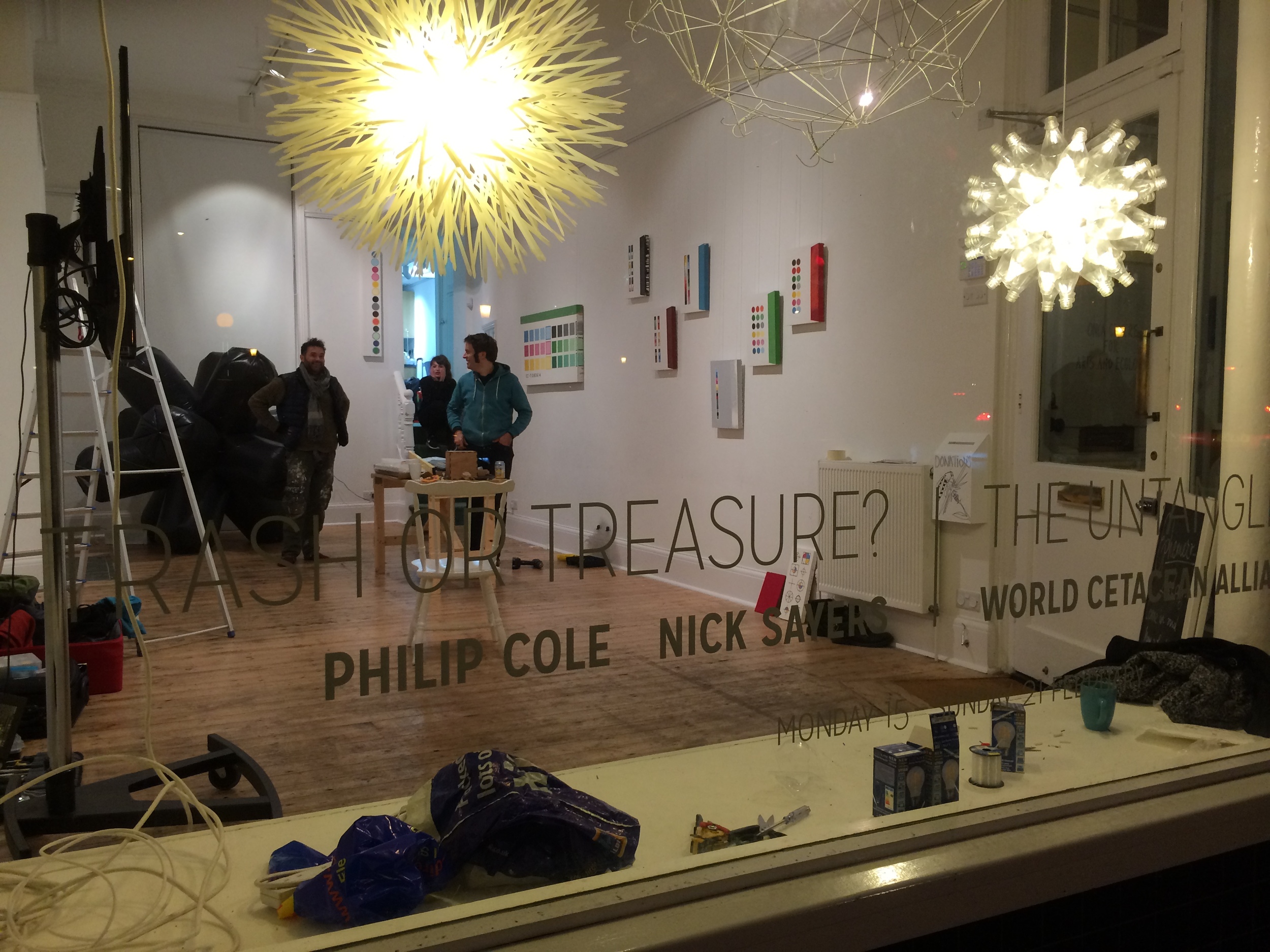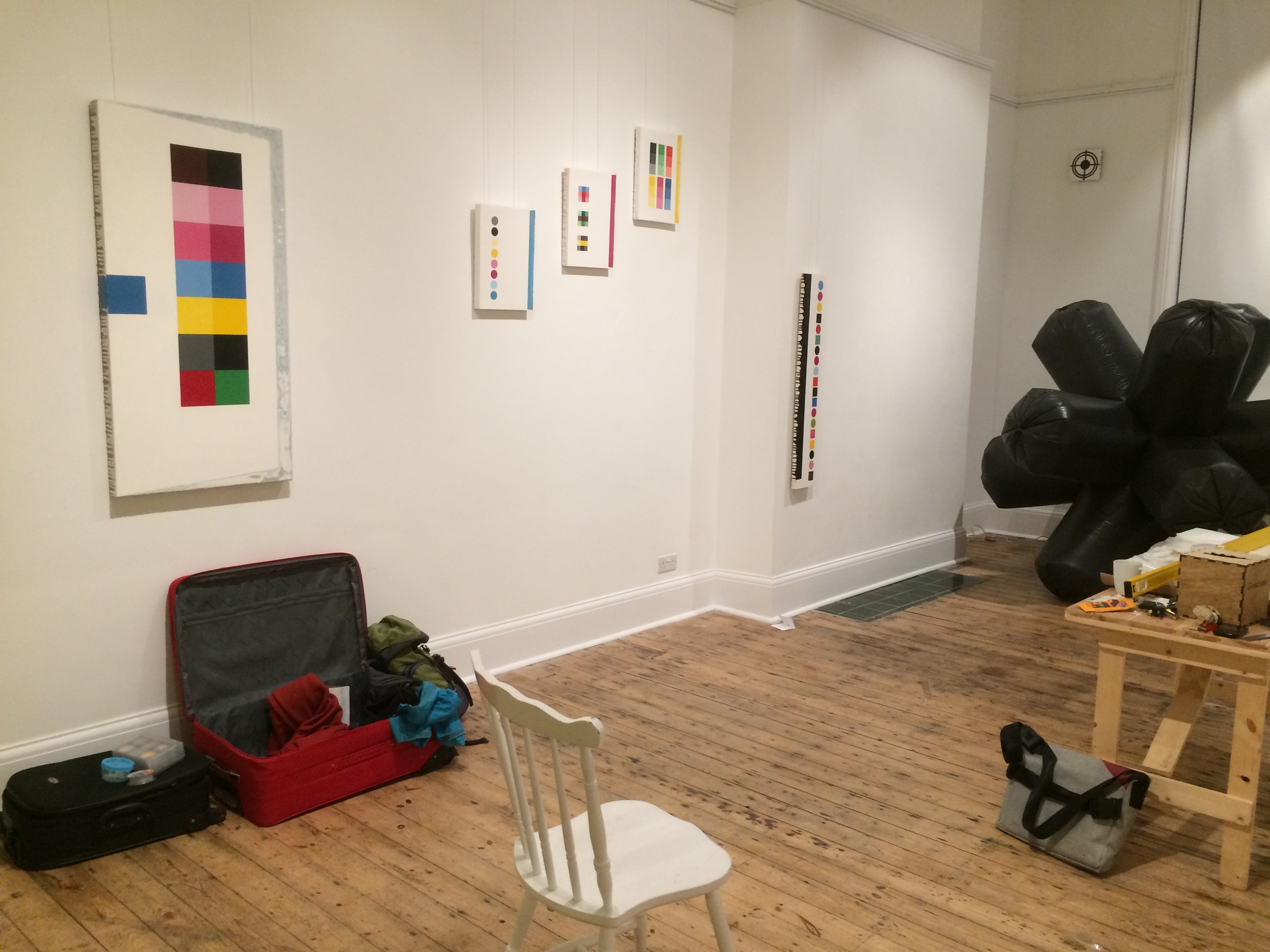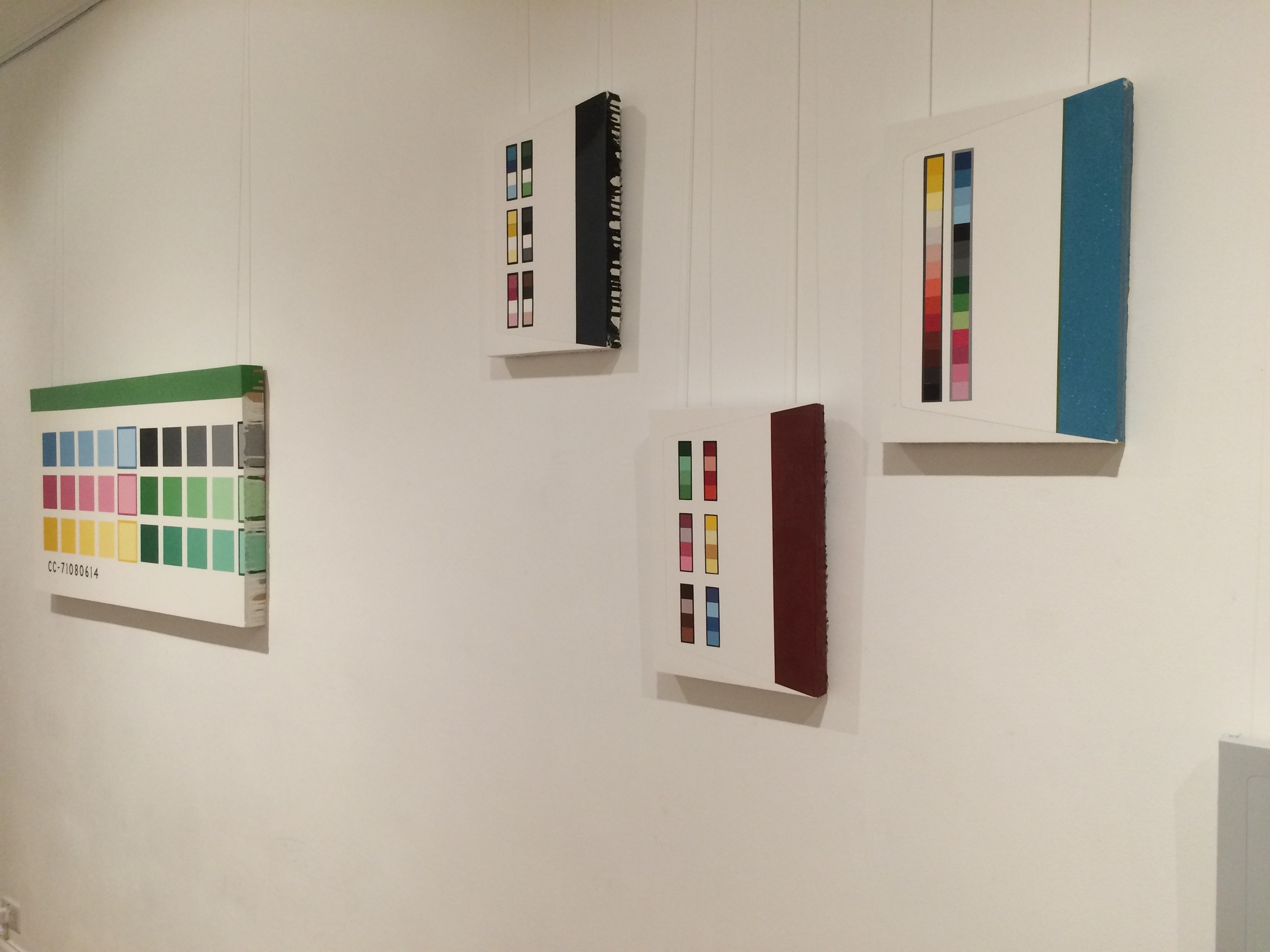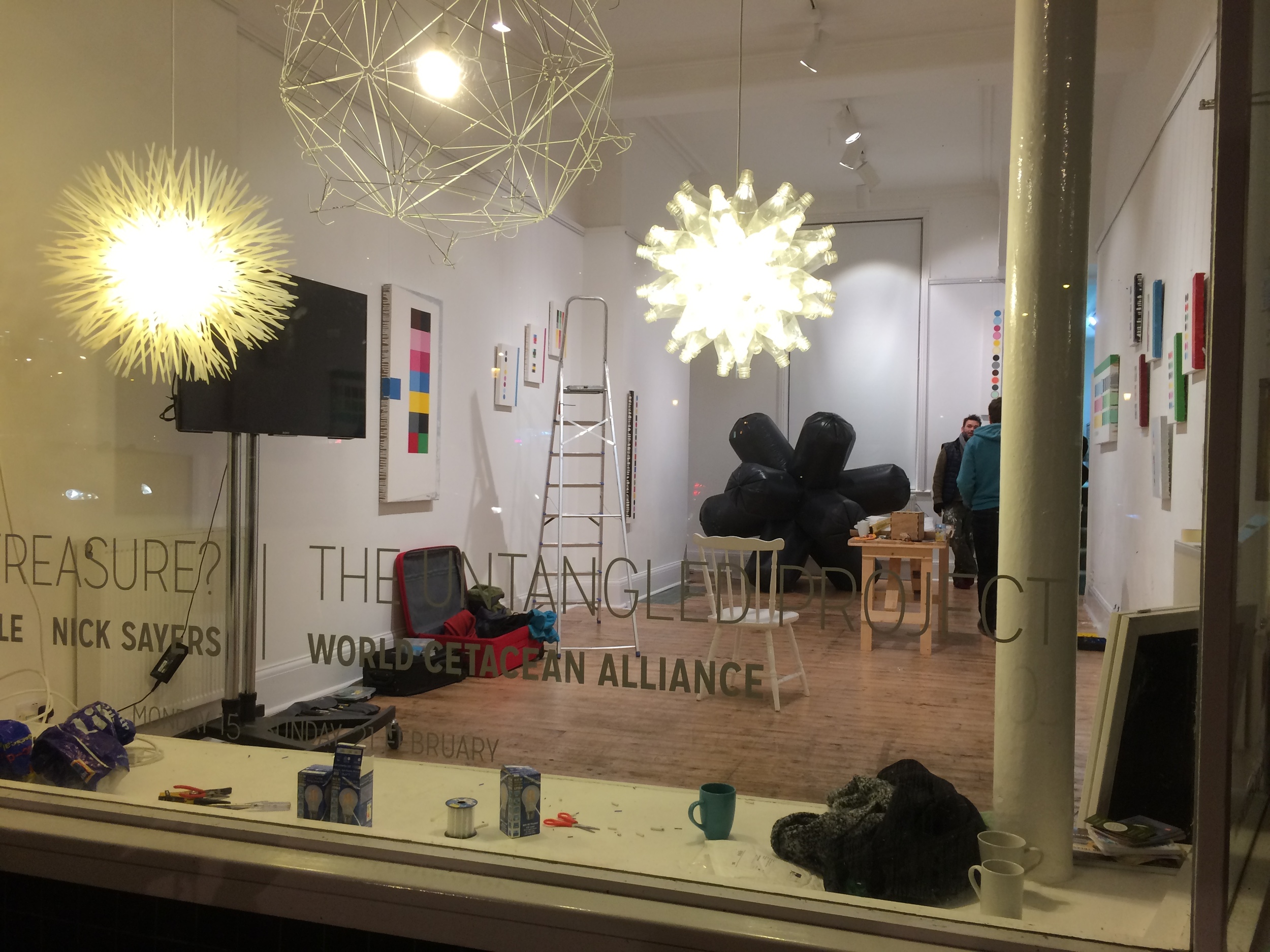Phoenix Brighton have Open Studios the weekend of 6th - 8th May. I will be in my studio and hope you can make it along for a visit ... and there are approximately 119 other studios to see.
Target - Coloured Polystyrene resins on board 30 x 30cm
Black and White
Target - Coloured Polystyrene resins on board 30 x 30cm
I have 7 target paintings in an exhibition of works in black and white by 20th century Russian and contemporary British artists at the Baker Mamanova Gallery in St Leonards on sea. Hope that you can get along to see the collected works.
The Source Park
To coincide with the opening of the new Source Skatepark in Hastings, a number of local artists and makers have 'painted' skateboard decks which are now on display at The Source. You will probably recognise my contribution. The 'Deck art' project is designed to raise lots of money for some worthy good causes locally. There will be a charity auction later on in the Spring when the Deck art work will be auctioned. Response Academy, Charity for kids and Xtrax will benefit from the money raised from this project and all proceeds will be used to support young people to get a better start in life or at least enjoy any limited time that they have left.
New work
Setting up for Trash or Treasure @ ONCA Gallery. Brighton
Busy day today with the Install - Lots of help from Alice and Gary and great to work alongside Nick Sayers and his fantastic sculptures. ONCA opens from 12.00am tomorrow with the preview/Q+A on Wednesday from 6-8pm. Hope to see you there.
Trash or Treasure - A peripheral View
As part of Brighton Science Festival. ONCA gallery have a number of great events planned for half term this month. I will be showing some recent and previously unseen new work in the gallery and am contributing to Trash or Treasure? I do hope that you will pop in sometime during the week. On wednesday early evening the gallery will have an extended opening where you could have a drink, look at the work and take part in the Q+A session as we consider my practice of using polystyrene to make and paint with - and the tensions involved in this process.
Half term activities at ONCA for Brighton Science Festival, Feb 15- 21
Join us to explore the art and science of plastic waste. We’ll be hosting a range of family friendly art/ science activities in the gallery for half term, culminating in a citizen science beach clean/ plastic survey on Saturday February 20th.
Schedule
Monday 15 – Sunday 21 February, all day.
All ages welcome, free admission. Come and investigate polystyrene paintings by local artist Philip Cole
Tuesday 16 February, 2-4pm.
Ages 7-12, £3 on the door. Collective Comics Workshop with artist Sophie Wolfson. Learn about and visualise the journey of plastic through cartooning!
Wednesday 17 February, 2-5pm.
Families welcome, £3 on the door. DIY art workshop for families with sci-artist Nick Sayers making plastic plankton
6-8pm: Trash or Treasure – a peripheral view. An evening with Philip Cole and his peripheral paintings. Learn about the art and science of painting with polystyrene, and the tensions involved in this process.
Friday 19 February, 2-5 and 7-9pm. All ages welcome, free admission.
2-5pm: Plastic Free Your Life and discussion hosted by Stephanie Wright and Carrina Gaffney
- No need for microbeads: drop-in DIY face cream workshop
- Microbeads under the microscope: what’s in my toothpaste? Why does it matter? Come and use our hand-held microscope to find out.
- Good vs bad plastic – is there such a thing as good plastic? Why are some plastics better or worse than others?
- How can we eradicate single use plastic?
- The fundamentals of citizen science projects – come and get inspired prepared for Saturday’s beach clean!
6pm: Microbiologist Stephanie Wright will talk about her work on marine plastics and their impacts on the health of invertebrates and humans.
7pm: Film screening, free admission. eXXpedition: Making the Unseen Seen, with talk from crew member Laura Coleman – ONCA’s founding director – and live link to the crew of Sea Dragon in Trinidad on the eve of their next research trip. This 40-minute film documents the journey of 14 women who sailed across the Atlantic Ocean on a scientific research mission to make the unseen seen – from the plastics in our oceans to the toxics in our bodies. Sailing for 19 days aboard 72-foot vessel Sea Dragon, the team sampled the ocean for plastics and pollutants, feeding these results into wider studies examining the impacts of toxics and plastic pollutants on personal and environmental health. The crew were also on a mission to create an inspiring narrative of female leadership and exploration, engage a wider audience on the consumer choices they make and explore these vital interconnections between human and environmental health. Above all, eXXpedition is a mission to inspire hope for a healthier future.
Saturday 20th, midday. All ages! BEACH CLEAN. Meet at ONCA to walk down to the beach with the ONCA team and our resident microbiologist Stephanie Wright for a citizen science beach clean with hand-held microscope and GPS tracking software. Back to ONCA for tea, biscuits and a debrief at 3pm.
Sunday 21st, 12 – 5pm. All ages, free admission. THE REPOSITORY: Join artist Philip Cole and friends at the gallery for a fun afternoon’s play and creative experimentation with found marine plastic waste. Can we turn our beach trash into treasure?
HNWI's and Patronage
'Your Net Worth'
I first heard the acronym HNWI (“high-net-worth individual”) discussed in two trustee meetings of different arts organisations. The context of both discussions centered around finding (targeting) new revenue streams for these financially hard pressed charities. I am curious about the way that the organisations that I have been involved with have needed to find wealthy philanthropists who might help to plug the widening funding gaps that have been emerging since the recent economic downturn.
It must be a wonderful thing to possess a resource that can make all the difference to the survival of an organisation. However, this reliance on the patronage of private individuals is an essentially unstable form of funding. Before the economic downturn there was a relatively stable period of state support for the arts. However in the last years, this is probably no longer the case unless your organisation is one of the RFO's (“Regularly Funded Organisations”). Even for this elite group the financial climate remains challenging.
How will the change in available funding streams affect the creative process in the long term?
As I write it has just been announced in the press that Mark Zuckerberg and his wife Priscilla Chan have pledged to donate 99 percent of their Facebook shares to the cause of human advancement. That represents roughly $45 billion at Facebook's current valuation, making it one of the largest pledges in history. The money will go to the Chan Zuckerberg Initiative, a company that Facebook says will:
"pursue its mission by funding non-profit organizations, making private investments and participating in policy debates, in each case with the goal of generating positive impact in areas of great need".
This is not an unfamiliar trend and history provides many examples of the philanthropy of wealthy individuals and organisations. Perhaps these donations are given freely and without expectations of return, but even if they are, what effect will this have on the independence of the organisations or individuals that benefit? Or, how it will impact on the kind of issues that they tackle? If a wealthy giver has links to China, will they be happy to see their money go to an artist critical of the human rights record there?
One problem with this situation is that it fails to address the issue of the widening gap between the super rich and the majority. A consequence of money coming primarily from private donors may be that those in the 'arts' become embroiled in the establishment of this trend towards social inequality and are no longer in a position to challenge it.
The history of art is full of examples of the uneasy relationship between artists and their wealthy patrons and the dependency that is created. In a wonderful letter to his would be patron, Samuel Johnson not only ridicules the offer of support but does so with humour and aplomb.
'Is not a patron my lord, one who looks with unconcern on a man struggling for life in the water, and, when he has reached ground, encumbers him with help? The notice which you have been pleased to take of my labours, had it been early, had been kind; but it has been delayed till I am indifferent, and cannot enjoy it: till I am solitary, and cannot impart it; till I am known, and do not want it. I hope it is no very cynical asperity not to confess obligations where no benefit has been received, or to be unwilling that the public should consider me as owing that to a patron, which providence has enabled me to do for myself'.
The numerous ways that artists have employed to subvert these relationships are well documented. Is there a return to a situation more reminiscent of the 18th century?
The following is an entry in Wikipedia:
'A high-net-worth individual (HNWI) is a person with a high net worth. In the western, and primarily American, private banking business, these individuals typically are defined as having investable finance (financial assets, excluding primary residence) in excess of US$1 million in constant 2006 dollars.
However, there are distinct classifications of HNWI and the exact dividing lines depend on how a bank wishes to segment its market. For example, an investor with less than US$1 million but more than US$100,000 is considered to be “affluent”, or perhaps even "Sub-HNWI". "Very-HNWI" (VHNWI) can refer to someone with a net worth of at least US$5 million'.
The article goes on to name another super class known as ultra-high-net-worth individuals, not to be confused with 'billionaires' who have the highest amount of investable income. Is this already long list of categories comprehensive enough though?
As the population of the world is now in excess of 7 billion (7,000,000,000) and there are approximately 13 million (13,000,000) HNWI's then most individuals must fall into any category 'below' this – that is approximately 99.8% of the world's population. The only other category for this vast group of people is the “Sub HNWI / Affluent” one. Clearly this group is substantial in size, but not nearly as large as those still not accounted for in this wealth categorisation process. Those individuals who are not affluent could be a categorised as Low Net Worth Individuals or LNWI's – or perhaps there should be several categories (as the difference between investors with less than US$100,000 and US$0 is considerable). Very low or even Ultra low perhaps?
A new wikipedia entry might read as follows:
'A low-net-worth individual (LNWI), a person with a low net worth, these individuals typically might be defined as having very limited (less than US$100,000) or no investable finance'.
I am curious about these ideas and they have been the catalyst for my contribution to EDITIONS//15- at Project 78 Gallery. I have intended the image to suggest pattern and shape as much as it does text. The letters and words however are inescapable - the tiered list is as follows: Billionaire, UltraHNWI, VeryHNWI, HNWI, affluent and LNWI. I have mimicked a process employed in previous text based works in the three colour screen printing process to produce the limited edition screen print that I have called: 'Your Net Worth'.
Editions//15 will be open until the 9th January
Philip Cole
January 2015
Galata bridge. Istanbul
Galata, Istanbul
I thought that I'd join in the fun of accidentally finding a renaissance type picture among my recent photographs
Galata bridge. Istanbul + Golden triangle




